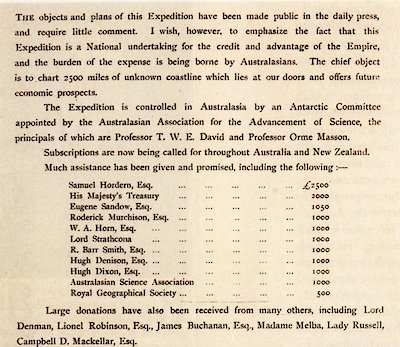Going public
Mawson used the prestige of AAAS patronage to support his wider public claims for the worth of the expedition. Appeals for public support in the Australian press brought promises of substantial aid from numerous wealthy citizens, a response later described by Mawson as ‘sympathy and warm-hearted generosity’.
Mawson told the Australian public that the AAE served the multiple purposes of science, territory, economy, national pride and tourism. He shifted the points around, adjusting their priority in the talk according to his audience. But he always left science at the top of the list:
The expedition is an Australasian scientific effort; it will advance and stimulate science throughout Australia.
Mawson emphasised science’s utilitarian potential: better knowledge of Antarctic weather would be ‘of value in weather predictions in Australia’. Oceanographic and magnetic surveys ‘will be of direct, practical benefit to shipping in Australian waters’.
His appeals did not fall on deaf ears. The AAE received £2,500 from Samuel Horden, owner of the Italianate Palace Emporium in Sydney, and £1000 each from the wealthy philanthropists Robert Barr Smith, Hugh Denison (with interests in tobacco) and Roderick Murchison (president of the Melbourne Club).

